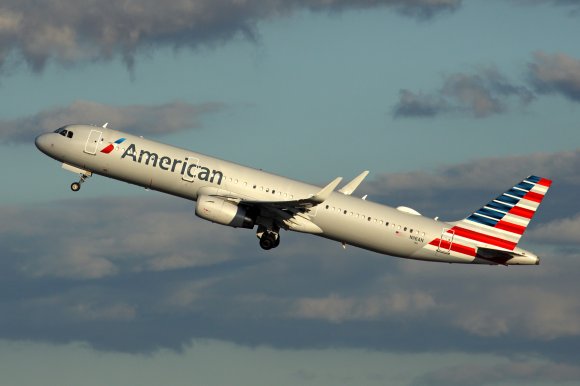American Airlines Operates 20 Empty A321neo Transatlantic Flights for Pilot Training

American Airlines is making headlines this month for a highly unusual operation: flying 20 round-trip transatlantic flights with no passengers or cargo. The decision is not a scheduling error but a deliberate training exercise designed to prepare the carrier’s pilots for the upcoming introduction of the Airbus A321XLR into international service.
The Airbus A321neo offers a range of about 3,500–4,000 nautical miles (6,500–7,400 km), making it ideal for medium-haul missions such as U.S. coast-to-coast or Europe to the Middle East. The A321XLR (Extra Long Range) stretches that capability to around 4,700–4,800 nautical miles (8,700–8,900 km), adding roughly 1,000 nautical miles more range. This extra endurance allows airlines to operate thinner long-haul routes—like New York to Rome or London to Delhi—that previously required widebodies such as the Boeing 757 or 767, positioning the XLR as a true transatlantic narrowbody workhorse.
Training Flights Between Philadelphia and Edinburgh
From September 4 to September 24, 2025, American Airlines is operating daily flights between Philadelphia (PHL) and Edinburgh (EDI) using a brand-new Airbus A321neo registered as N471AN. The aircraft is flying a dedicated schedule as AA9805 departing Philadelphia at 8:40 p.m. and arriving in Edinburgh at 8:30 a.m. the next day, before returning as AA9806 departing Edinburgh at 9:30 a.m. and landing in Philadelphia at noon.
Normally, American’s Philadelphia–Edinburgh route is operated by a Boeing 787 Dreamliner during the summer season. For this exercise, however, the smaller Airbus A321neo was chosen specifically to simulate narrowbody transatlantic operations, which will soon become central to the airline’s growth strategy.
Why Fly Empty? Preparing for the A321XLR
The Airbus A321XLR, a longer-range version of the A321neo, is set to play a key role in American’s transatlantic network. With its ability to connect secondary U.S. cities to European destinations that do not require the capacity of a widebody jet, the aircraft offers a more efficient way to serve medium-demand markets.
But before the A321XLR can enter service, pilots must complete a rigorous training program that goes beyond simulators and classroom sessions. Transatlantic flying involves mastering oceanic clearances, long-range fuel management, and complex coordination with multiple air traffic control authorities. These flights also expose pilots to North Atlantic Tracks and unique international operational requirements.
Because American currently has no Airbus narrowbody service across the Atlantic, it must operate dedicated training flights rather than incorporating the process into normal schedules.
A321neo Range with Only Fuel and Pilots
The range of the A321 depends on the variant and fuel setup. With no passengers or cargo (a “ferry” flight), the limit is essentially maximum fuel versus takeoff weight, plus winds and reserves. Here are realistic, still‑air planning ranges. ACT stands for Additional Center Tank — it’s an optional fuel tank installed in the cargo hold of certain Airbus A321neo aircraft to extend their range:
| Variant | Range (nm) | Range (km) | Range (mi) | Notes |
|---|---|---|---|---|
| A321neo (standard) | 3,700–4,200 nm | 6,852–7,778 km | 4,256–4,833 mi | With ACTs and higher MTOW |
| 3,200–3,600 nm | 5,926–6,667 km | 3,682–4,143 mi | Without ACTs | |
| A321LR | 4,300–4,600 nm | 7,963–8,519 km | 4,949–5,296 mi | 3 ACTs, 97-ton MTOW |
| A321XLR | 4,900–5,100 nm | 9,075–9,445 km | 5,638–5,870 mi | Integrated rear center tank |
These figures represent maximum ferry range—meaning no passengers or cargo, just fuel and crew. Real-world dispatch will vary based on winds, reserves, and airport conditions, but this gives a solid benchmark for how far each variant can go when stretched to its limits.
The Role of Check Airmen
At the center of this training effort are “check airmen”—senior pilots certified to train and evaluate other pilots. These individuals must themselves be qualified on transatlantic operations with the Airbus narrowbody fleet before they can pass that knowledge on.
By operating 20 round-trip flights without passengers, American ensures that check airmen receive hands-on experience in real-world conditions. Once certified, they can train hundreds of other pilots, creating the foundation for a fully prepared crew base.
Cost of the Training Exercise
Flying 20 empty round-trips is a costly undertaking. Across 40 transatlantic sectors, the A321neo will log more than 134,000 miles. Fuel, maintenance, crew, and depreciation expenses will likely push the total cost well past a million dollars.
Despite the steep expense, airline executives see the program as an investment in safety and reliability. Training in simulators cannot fully replicate the unpredictability of international flying, from weather patterns over the North Atlantic to operational challenges at foreign airports. The exercise ensures that when the A321XLR begins carrying passengers, operations will run smoothly.
Preparing for JFK A321XLR Base
The timing of these training flights is closely tied to American Airlines’ plan to establish an international pilot base for the A321XLR at New York John F. Kennedy International Airport (JFK). Once active, the base will support new transatlantic routes connecting New York to European destinations where demand is strong but does not justify a larger aircraft.
By training check airmen months in advance, American minimizes the risk of delays when the A321XLR enters service. The strategy also reinforces JFK’s importance as a hub for the airline’s long-haul operations.
American Airlines’ decision to operate 20 empty A321neo flights between Philadelphia and Edinburgh may seem unusual, but it reflects the realities of preparing for next-generation aircraft. The Airbus A321XLR promises to reshape transatlantic flying with fuel efficiency and right-sized capacity, but bringing it into service requires careful pilot certification.
These flights underscore the complexity and cost of running a global airline, where even a single new aircraft type can require months of planning and millions of dollars in preparation. By investing heavily now, American is positioning itself to lead the next phase of narrowbody transatlantic travel—balancing efficiency, safety, and long-term growth.
Related News: https://airguide.info/?s=airbus+A321, https://airguide.info/?s=american+airlines
Sources: AirGuide Business airguide.info, bing.com, aviationa2z.com
